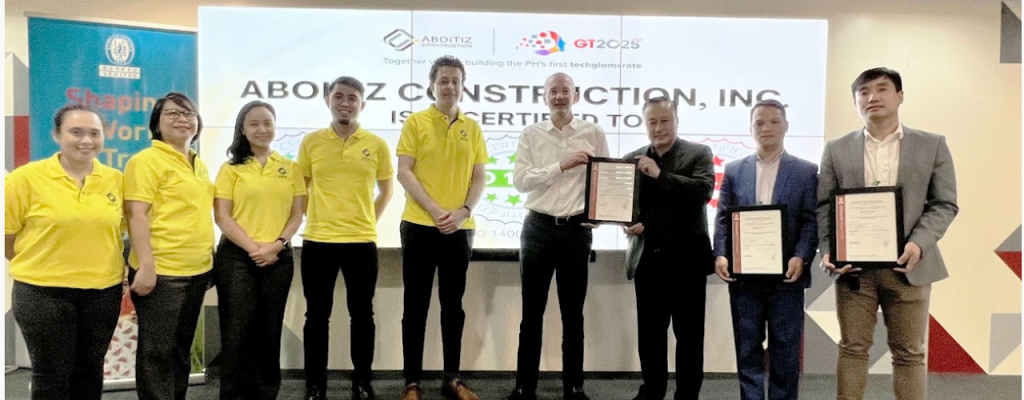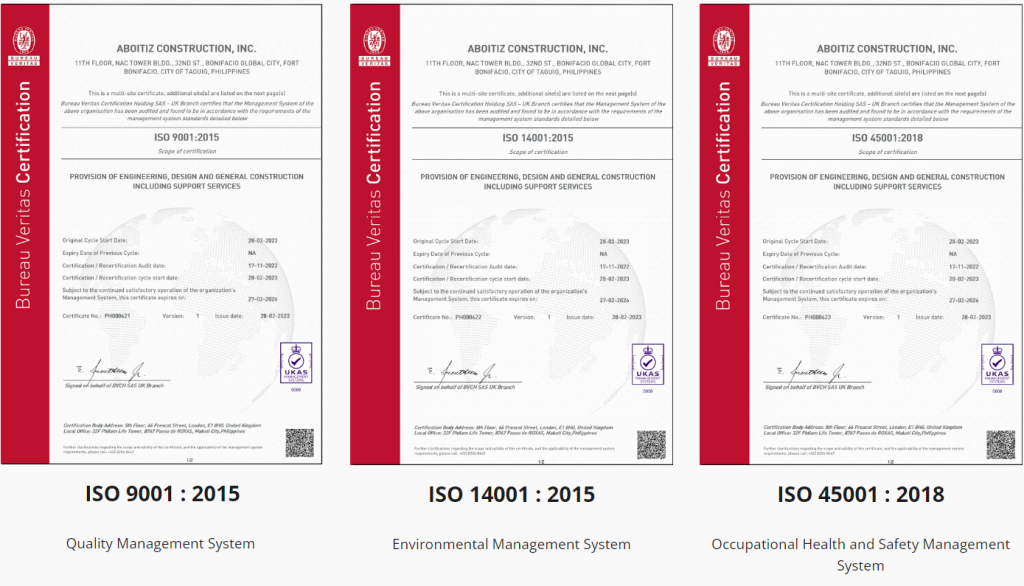Aboitiz Construction’s Risk Management Policy provides a comprehensive framework for identifying, assessing, and managing risks across the company. Aligned with the International Standard ISO 31000, it is designed to protect the company’s reputation and core investments while creating long-term value for stakeholders.
The policy outlines the purpose, scope, and philosophy of risk management at Aboitiz Construction. It aims to formalize risk management activities, clarify roles and responsibilities, and communicate the status of risks faced by the organization. The company emphasizes a culture where every team member contributes to effective risk management.
Governance
The governance structure includes:
- Board of Directors: Overall responsibility for risk management.
- Executive Committee: Oversight of the risk management program.
- Risk Management Team: Develops and implements the Enterprise Risk Management (ERM) strategy.
Aboitiz Construction has established a quantified risk tolerance guideline ensuring informed risk-taking aligned with potential rewards.
Risk Framework
The Risk Management Framework is organized into four pillars: Governance, Process and Integration, Risk Finance, Insurance Management, and Capability Building. These pillars guide the design, implementation, monitoring, and improvement of risk management processes across the organization.
Process
The policy adopts a structured process based on ISO 31000, which includes:
- Establishing Context: Defining internal and external parameters for risk management.
- Risk Assessment: Identifying, analyzing, and evaluating risks.
- Risk Treatment: Selecting options to modify risks.
- Monitoring and Review: Continuously monitoring risks and the effectiveness of treatments.
- Communication and Consultation: Engaging stakeholders throughout the process.
Risk Classification
Aboitiz Construction’s risks are identified and managed at different levels such as Strategic, Operational, and Project. They are classified based on their impact on finance, legal and compliance, reputation, among others, which helps in identifying the responsible parties to manage them.
Insurance Management
The risk treatment action plan includes achieving an optimal balance of retaining and transferring risks through insurance.
Capability Building
The company emphasizes building a strong risk management culture through training and communication initiatives to enhance employees’ understanding of risk management principles.
Policy Administration
The policy sets guidelines for administration, monitoring compliance with international standards, and maintaining effective communication regarding risk management practices.
The Risk Management Policy establishes a robust framework that integrates risk management into all aspects of operations, ensuring proactive identification and treatment of risks while fostering a culture of accountability across the organization.



